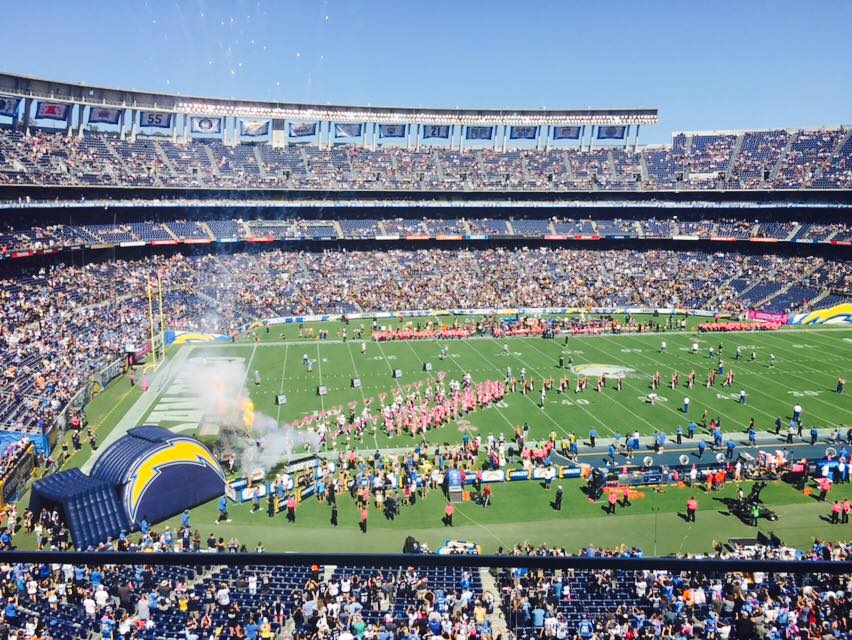A part of a vision unveiled by developers on Thursday, Qualcomm Stadium would receive major upgrades to host an NFL franchise and anchor a surrounding development.
A development group that includes Doug Manchester is seeking to bring the NFL back to San Diego. Rather than replacing Qualcomm Stadium, the group is suggesting that it be given a significant overhaul that would boost it to modern NFL standards.
The newly-renovated, 70,000 seat stadium would include modernized technology offerings, along with upgraded seating, and a playing field that is 13 feet lower than the current surface. One of the most significant changes would be the demolition of an expansion that was completed in 1997, which would open a portion of the stadium to the surrounding area.
In addition to the Qualcomm Stadium overhaul, the concept includes an arena, hotel, mixed-use space, an expansion for San Diego State University, and park space. The total development would cover 22.5 million square feet.
Backers of this proposal have come forth after FS Investors, which is seeking to bring an MLS expansion franchise to the city, released plans for SoccerCity, a development that would encompass much of the Qualcomm Stadium site. Officials behind the proposal for the renovated Qualcomm Stadium hope it will receive proper consideration. More from The San Diego Union-Tribune:
The impetus to prepare the plan, which was thrown together in the last nine days, is the initiative campaign being launched by La Jolla-based FS Investors to build SoccerCity — a 30,000-seat soccer/SDSU stadium, 4,800 homes, 3.1 million square feet of commercial and 55 acres of parkland on the 166-acre site — a billion-dollar-plus venture. The total square footage involved in SoccerCity is about 9.2 million square feet, less half as big as the Manchester concept.
Perry Dealy, a Manchester consultant and developer and architect in his own right, said instead of running with the FS plan, the city should stop, master plan the site itself and then invite more competition by issuing a request for proposals over the next two or three years.
“We just came up with this because we didn’t have much time since soccer came out of nowhere,” Dealy said.
Dealy said the plan, laid out by Randy Morton, a principal and director of HKS Urban Design Group in New York, will be forwarded to the NFL, city officials and others in coming days, and new details will be added as the concept is refined. For now, he guessed the total value might approach if not surpass $2 billion.
More precise costs, let alone financing, have yet to be determined. But [Manchester Financial Group vice chairman Dick] Gibbons noted that the Chargers are paying $650 million in a relocation fee — an amount that could have covered Qualcomm’s renovation.
As is proposed, SoccerCity would lead to the demolition of Qualcomm Stadium. It does allow for the construction of a new NFL stadium, as plans allow for 16 acres to be set aside for a five-year period. Projections released by the San Diego Regional Economic Development Corp on Thursday show that SoccerCity could provide a $2.8 billion economic boost at full buildout.
Qualcomm Stadium was home to the San Diego Chargers through the 2016 NFL season, but the team announced in January that it is relocating to Los Angeles. The stadium is expected to continue hosting SDSU football for at least the next two seasons.
Image courtesy San Diego Chargers.
RELATED STORIES: Report: Developer Pitching NFL Stadium in San Diego

